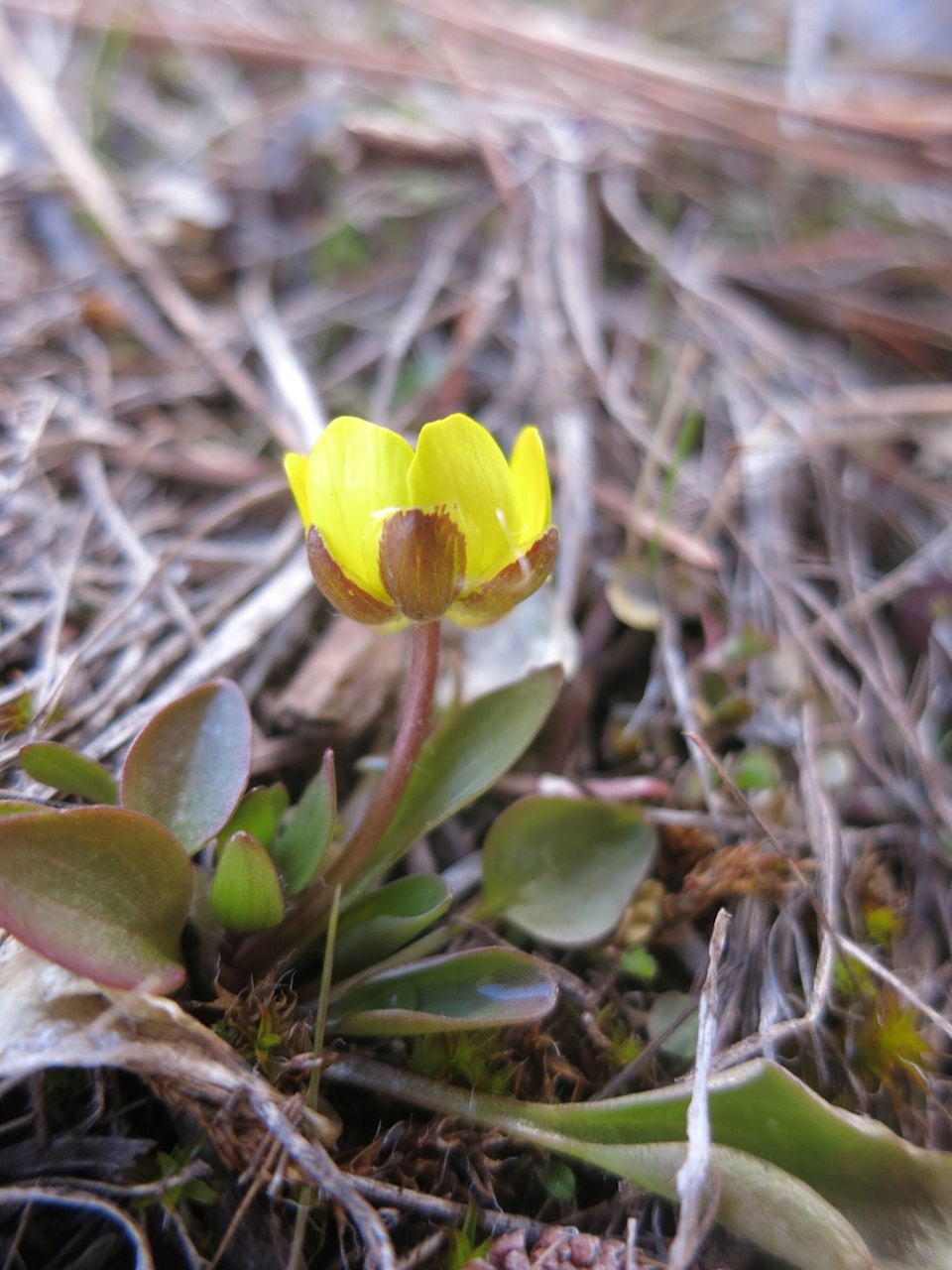By Ed McMackin, a biologist by training and a naturalist by nature
The first significant (apt to be noticed) wildflower, Sagebrush Buttercup, was blooming its first day on March 12. That is one week later than observed last year, on March 5. Buttercup flowers may have five to 10, one-inch petals and five sepals. On March 19, two dozen were blooming at the same location and at two other locations nearby. The reason why the buttercups came up later this year is, in part, likely due to the colder nights and less sunny days in early March. Add to that, the lingering snow cover as well. The blooming time this year is actually more normal.
Why do buttercups bloom as early as they do in this meadow, sooner than on many lower slopes around the Kootenay Lake-Creston region? It is that conditions are more favorable. The site where these flowers bloom early is on an open slope facing south consisting mainly of shallow soil-covered bedrock, where moisture from snow melt seeps down over the bedrock. The site is protected from accumulations of snow and wind exposure by a small ponderosa pine grove on the north side of the site. Solar radiation and the sun’s warmth are somewhat contained in this site, more than other sites that may be treed, facing east or west, northern slopes or even flat-open areas.
Buttercups, if present in these other aspects, will bloom later. East-facing west valley slopes, and west facing aspects on east valley slopes, have average lower temperatures than south aspects. Naturally, south aspects dry out quicker, while east or west open aspects retain moisture longer. Seepage from snow melt through the thin soil layer over bedrock, supplies adequate water for the growth and blooming of early spring flowers, such as Sagebrush Buttercup (Ranunculus glaberrimus), Mountain Bluebell (Mertensia longifolia), Yellow Bell (Fritillaria pudica), and Shooting Star (Dodecatheum).
Whether or not early spring flowers can be affectionate, botanists and wildflower enthusiasts still call them “ground-huggers”. Because, close to the ground there is less cold, drying winds, and warm air that gets “trapped” by other, surrounding, low vegetation. Ground-hugging Sagebrush Buttercups average around 2.5 cm (l in.) in height, when they put out the first flower.
READ MORE: Out There: A Flower Deception
